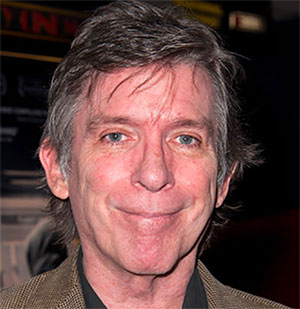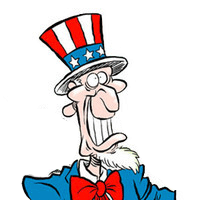Developing 'Alien: Earth' was all about building suspense -- and getting Easter eggs right
Published in Entertainment News
Here’s what one might expect from a series rooted in the “Alien” universe: dimly lit spaceship corridors, sleeping pods, computer screens, something slithering in the shadows and, of course, lots and lots of blood.
Here’s what you don’t expect: lore from “Peter Pan.”
But then FX’s “Alien: Earth” was created by Noah Hawley, who made his narrative mark with adaptations of “Fargo” and “Legion.” And for Hawley, who was 9 when the first film debuted, his relationship to “Alien” has always been rooted in childhood and suspense.
He remembers how thrilled he was to be invited on a birthday outing to watch Ridley Scott’s 1979 sci-fi masterpiece, and the disappointment when his parents objected to the film’s R-rating. (He had to settle for Peter Falk and Alan Arkin in “The In-Laws.”)
It wasn’t until years later, as a teenager hanging out at a friend’s house, that he finally experienced — on LaserDisc — one of the most chilling and visually iconic renderings of extraterrestrial life in the cinematic canon. And, as with millions of other viewers, the mid-film reveal — the defining moment when an alien being bursts from the chest of a space crew member — took him completely by surprise.
“Because of its pace and because of these blue-collar space truckers, [the film] lulls you into this sense of ordinariness,” Hawley says. “So when the story really starts, which isn’t for like 45 minutes into the movie, what happens is so shocking. It’s the opposite of how a horror movie is built. You’re supposed to feel dread from the first moment. This doesn’t do that. It’s earned.”
That subversive structure is what came to mind when FX, all the way back in 2018, asked if he had an idea how to turn the storied sci-fi film franchise into a series. Of course he did. He approached it the way he’s done with other established properties, including for a “Star Trek” film that never made it to screen: “What I like is the original lives in my head, it’s in the corner of my eye. What are the feelings that linger with me from the film? And how do I create those feelings?”
The suspense was not just narrative; between delays caused by Disney’s takeover of Fox and the dual strikes of 2023, it has taken seven years for Hawley’s contribution to the nine-film “Alien” mythology — delivering the franchise’s first TV show — to make its big reveal.
Premiering with two episodes on FX and Hulu Tuesday, the series is set in 2120, two years before the events of the original film. Viewers are introduced to a new crew charging through space aboard the Maginot — owned by the Weyland-Yutani company, the same megalomaniacal enterprise that sent Ellen Ripley (Sigourney Weaver) and her crew into orbit to retrieve the double-jawed, acid-filled Xenomorphs, the franchise’s central alien antagonist, for weaponization. After a 65-year mission spent gathering specimens of alien life, the Maginot is on its way back to Earth when it crashes into a densely-populated city, governed by a rival corporation, Prodigy.
Prodigy, of course, wants to retrieve whatever findings its competitor has acquired and all manner of mystery and mayhem ensues.
The Times spoke with Hawley and his creative team about building the world of “Alien: Earth,” which filmed in Thailand on 13 sound stages spread across five facilities.
‘Peter Pan,’ but with humanoid robots
With warring megacorporations, artificial intelligence and the specter of an existential crisis for humanity itself, the series may feel disturbingly familiar to viewers in 2025. But Hawley is more interested in mythology and cautionary tales than headlines, and one far older than “Alien.”
In “Alien: Earth,” Prodigy, one of the five megacorporations locked in a technological arms race, is run by a young, mad trillionaire known as Boy Kavalier (Samuel Blenkin). His company has developed “hybrids,” humanoid robots infused with the human consciousness of children whose bodies were plagued by illness — they’re known as the Lost Boys — and led by “Wendy” (Sydney Chandler), once a 12-year-old girl named Marcy who was the first to undergo the procedure.
And no, Hawley says, the “Peter Pan”-Disney tie-in wasn’t a mandate by the new bosses — “I ended up feeling clever because I had managed to marry these [Fox and Disney] brands without intending to do so,” he says.
“‘Peter Pan,’ if you go back and read the book, is actually a really dark [story],” Hawley says. “Peter is a really narcissistic, almost sociopathic boy. There’s lines in there about how, when the kids grow up, he gets rid of them. Well, what does that mean? There’s even a sequel where it’s the daughter, Jane, he takes because Wendy is grown up. There’s something really vindictive and weird about it. But it’s also this iconic childhood [tale] — the kids never grow up.”
Costume designer Suttirat Anne Larlarb says the rules for Wendy and the Lost Boys had to strike a balance between the individual within the system. When they start their lives in their adult bodies, they are introduced in their “transition” suits — fitted, monochromatic white sets that resemble stretched gauze — and receive a tailored, structured wardrobe from which they can each choose a limited assortment of pieces with a controlled color palette that has more richness and life than the corporation’s staff uniforms: “Their daywear clothing feels individualized but is really a uniform, illustrating that they are each products developed in Neverland.”
In “Alien: Earth,” humanity is trapped between two existential threats — the primordial forces represented by the franchise’s Xenomorphs, and the still unknown AI of the future.
“One of the things, in terms of thinking about the moment that we’re living in right now with technology,” Hawley says, “is this idea of who are the adults? I think what we really need right now are some real adults who think more about tomorrow than today. If you’re going to hit the zeitgeist, you almost can’t be aiming at it. When we wrote these scripts, there was no ChatGPT. But those issues, even Ridley saw them coming.”
Retro-futurism and the USCSS Maginot
For those wondering if they’ll recognize this “Peter Pan”-influenced bit of the “Alien” universe, well, one of the first choices Hawley had to make was environmental. “Are we doing retro-futurism? Are we doing the the cathode ray tube screens? Are we doing all of that stuff that in 1979 felt super futuristic, and to us now, feels like 1979?” he says. “And the answer is: of course we are. That is what ‘Alien’ is. What I had to wrestle with were the choices that Ridley made later on in ‘Prometheus,’ which was a prequel to ‘Alien.’ I was like, ‘I can’t really grapple with that in a way that makes sense to me. So I’m just going to adapt [the] first two films and focus on that aesthetic.’”
The original script had the prequel opening with a “Once upon a time ...” parable about Wendy and the Lost Boys. But that, he says, “didn’t say ‘Alien’ right away.” After some conversations with FX, the opening moments morphed into a truncated version of the original film’s initial sequence that created a sense of unease by gradually drawing viewers into its deep space cargo ship.
Jeff Russo, the show’s composer, wanted the melodic cues to evoke one feeling: “Oh f—. ‘Alien.’”
“It’s tension, release, tension, release,” he says. Russo used a hybrid metal-stringed instrument made by an Austrian company. “I could use it in a lot of different ways — I can hit the metal and it makes very weird, otherworldly sounds; I can bow the strings and it has a very deep, very rich, very emotional yet scary sound.”
The sound set up the tension inside the show’s retro-futuristic space craft, which was designed to resemble the original film’s famed vessel, the USCSS Nostromo. Andy Nicholson, the show’s production designer, said his team meticulously studied the film and books featuring fan renderings to help replicate its labyrinth of metallic corridors, cramped compartments and blinking command center. It wasn’t until construction on all but one of the ship’s sets was complete that they were able to track down and access archived drawings from the original film’s art department. Nicholson says there was a team of people who policed placement of Semiotic Standard, the color-coded information symbols designed by Ron Cobb for the Nostromo spacecraft, on Maginot.
“It was a huge responsibility and I didn’t want to mess up,” Nicholson says. “There’s a history for the fans. You can’t mess up the Easter eggs. There are specific things you can’t get wrong because you’ll just lose people.”
Larlarb says about 2000 costumes — maybe more — were made, with 90% done in-house (“We didn’t want it to feel like it was ‘off the rack,’” she says). And the looks for the Maginot crew had to riff off the well-established uniform basis of the Nostromo and the Weylan-Yutani system. The palette is muted in creams and earth tones, with practical utilitarian jumpsuits and jackets.
“I made sure to create a uniform system that could reside unquestionably in that canon,” she says. “Our Maginot is on a different kind of mission — a research exploration mission — so the crew uniforms needed to reflect a different branch from the original.”
With the vessel’s collision on Earth, the retro-futuristic aesthetic carries over into the sleek cityscape of Prodigy City. Nicholson says he pulled references of car interior designs and European furniture designs from around the late ’70s — “That was futuristic. It was the first time you saw, very briefly, digital displays in car dashboards” — as he thought about what Earth should look like in their version of the future.
A piece of tech they decided to add? Tablets.
“They didn’t really think about tablets in those first two films, but we have tablets,” Hawley says. “So, what are those like?”
Xenomorph and its alien buddies
The franchise’s iconic space monster, the Xenomorph, is the returning megastar of the series. Originally designed for the 1979 film by surrealist artist H.R. Giger, the creature’s looming presence is telegraphed early, in rapid cuts during the opening sequence. Like its relatives, it towers and stalks the wrecked spacecraft and whatever is in sight. The organism’s various states of evolution — as an egg sac or the Facehuggers that hatch from them — are back too.
The intensity of the Xenomorph’s barbarism really begins in Episode 2, which places the skulking creature in more action-heavy sequences. (And just as in the original film, the figure is operated by a stunt performer; here it’s Cameron Brown.)
“We show more of the Xenomorph than everybody else has shown,” says Dana Gonzales, a longtime collaborator of Hawley’s and director of the episode. “Later on, you realize why we do that; it doesn’t just become a character that’s coming out of a dark hole. There’s this point where it’s going to be much more present. Finding that language of how to get there, it starts with the first episode of giving fans what they hope to be tuning in for.”
While its towering and sleek exoskeleton frame and otherworldly facial features — this one has human-like silver teeth, dripping in goo — remain a formidable sight, its invisible terror is what often brings the horror. One unforgettable scene ends in gruesome bloodshed, but its brutality is enforced by sound while the fatal attack is visually obscured.
“Noah and I both agreed that what you don’t see and what you hear is scarier,” Gonzales says. “We can’t show a crazy amount of slaughter on TV — we do in the show, later on there are some pretty brutal scenes. But there’s still a certain amount of containment.”
Adds Russo, who sometimes used an Aztec death whistle, a small, skull-shaped instrument with air chambers that produce a scream-like sound, to signal the creature’s horror: “Music is only as important as the silence that precedes it. You don’t see what the Xenomorph is doing, but when you see what happened afterwards, all of a sudden, it’s all in your head.”
The show adds other extraterrestrial creatures, just as eerie and lethal, to the “Alien” canon too. But those are best seen, not read about — like every “Alien” iteration, it’s all about the suspense.
______
©2025 Los Angeles Times. Visit at latimes.com. Distributed by Tribune Content Agency, LLC.













Comments